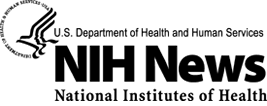Last updated: July 31, 2012
NHGRI Launches Improved Online Talking Glossary of Genetic Terms

National Human Genome Research Institute
www.genome.gov
NHGRI Launches Improved Online Talking Glossary of Genetic Terms
Bethesda, Md., Tues., Oct. 20, 2009 — The National Human Genome Research Institute (NHGRI), part of the National Institutes of Health, today launched the next generation of its online Talking Glossary of Genetic Terms. The glossary contains several new features, including more than 100 colorful illustrations and more than two dozen 3-D animations that allow the user to dive in and see genetic concepts in action at the cellular level.
The updated glossary, announced at the 2009 annual meeting of the American Society of Human Genetics (ASHG), gives students, teachers and the public a reliable online resource for more than 200 terms and basic concepts behind today's breakthroughs in genetics and genomics. The glossary is available at www.genome.gov/Glossary.
"The Talking Glossary has long been a popular resource for anyone wanting to understand genetics and genomics," said Alan E. Guttmacher, M.D., acting director of NHGRI. "This updated version should be even more effective at helping people to understand the discoveries of genomic research, which are now starting to have a real impact on healthcare."
Each genetic term, many from current textbooks used in middle and high school science classes around the nation, includes a written definition. The glossary "talks" because users can actually hear an audio pronunciation of each term, and also listen to an audio explanation from scientists who provide context and other supplementary information. A speaker biography and photograph accompany each term listed in the glossary. The user can examine the speaker's credentials and learn more about his or her research interests.
The updated version includes a variety of new search methods, making it easy for a user to find the term of interest, from alphabetically organized navigation to search functions, and to easily access a list of related terms. There's even a fun new "Test Your Gene Knowledge" quiz that allows users to check their understanding of the glossary's contents and print a report card of their results.
"What the new version of the glossary offers is an exciting and easy-to-use tool on genome.gov that was designed to help students or everyday people deal with the often confusing language of genetics," said Jeff Witherly, senior advisor in NHGRI's Education and Community Involvement Branch, which led the glossary redesign. "Whether it is more common terms such as "DNA" or "gene", or complex terms such as "allele" or "stem cell," they are all here."
The glossary was reviewed by more than 30 educators in order to meet NHGRI's standards. The terms used in the glossary are also associated with biological concepts addressed by the National Science Education Standards, which are achievement goals for science educators established in 1999 by the National Research Council.
A high-resolution illustration from the Talking Glossary animation depicting a cross-section of a cell is available at www.genome.gov/dmd/img.cfm?node=Photos/Graphics&id=85348.
ASHG is the primary professional membership organization for human genetics specialists worldwide. The group represents 8,000 researchers, clinicians and others involved in the rapidly growing field of genetics and genomics.
NHGRI is one of 27 institutes and centers at the NIH, an agency of the Department of Health and Human Services. Additional information about NHGRI can be found at its Web site, www.genome.gov.
The National Institutes of Health — "The Nation's Medical Research Agency" — includes 27 Institutes and Centers and is a component of the U. S. Department of Health and Human Services. It is the primary federal agency for conducting and supporting basic, clinical and translational medical research, and it investigates the causes, treatments and cures for both common and rare diseases. For more information about NIH and its programs, visit www.nih.gov.
Contact
Omar McCrimmon, NHGRI
301-402-0911
mccrimmono@mail.nih.gov

